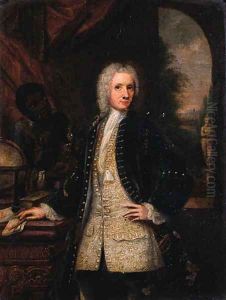Johannes Vollevens II Paintings
Johannes Vollevens II was a Dutch painter born in 1685 in The Hague, Netherlands. He was part of a family of artists that made significant contributions to Dutch painting across generations. His father, Johannes Vollevens I (1649–1728), was also a well-regarded artist, which provided Johannes II with an environment rich in artistic tradition and exposure from a young age. Despite the prominence of his family in the arts, information about his early life and training is relatively scarce, but it is believed that he was trained by his father, absorbing the techniques and styles that were prevalent in Dutch art of the time.
Johannes Vollevens II specialized in portraits and genre scenes, much like his father. His works are noted for their delicate brushwork, attention to detail, and the ability to capture the personality and essence of his subjects. He worked primarily in The Hague, where he was a member of the Confrerie Pictura, an important guild for painters established in the 17th century. This affiliation with the Confrerie Pictura not only reflects his status among his contemporaries but also helped him to secure commissions and participate in the vibrant artistic community of his time.
Throughout his career, Vollevens II developed a distinctive style that, while influenced by his father and the Dutch Golden Age traditions, showcased his own artistic sensibilities. His portraits often depict members of the Dutch middle class, clergy, and nobility, providing a window into the society of his time. Additionally, his genre scenes are valued for their narrative quality and the insight they offer into the daily lives and customs of 17th and 18th-century Dutch society.
Johannes Vollevens II's contributions to Dutch art continued the legacy of his family, and his works are part of several museum collections today. Despite facing competition from other talented artists of his era, his ability to capture the spirit of his age and the individuality of his subjects has ensured his place in the annals of Dutch painting. He died in 1759 in The Hague, leaving behind a body of work that continues to be studied and appreciated for its artistic merit and historical significance.
